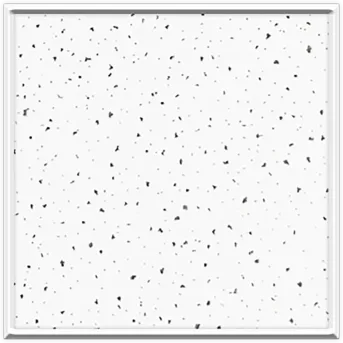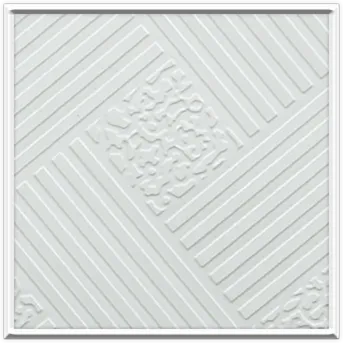- Afrikaans
- Albanian
- Amharic
- Arabic
- Armenian
- Azerbaijani
- Basque
- Belarusian
- Bengali
- Bosnian
- Bulgarian
- Catalan
- Cebuano
- Corsican
- Croatian
- Czech
- Danish
- Dutch
- English
- Esperanto
- Estonian
- French
- German
- Greek
- Hindi
- Indonesian
- irish
- Italian
- Japanese
- Korean
- Lao
- Malay
- Myanmar
- Norwegian
- Norwegian
- Polish
- Portuguese
- Romanian
- Russian
- Serbian
- Spanish
- Swedish
- Thai
- Turkish
- Ukrainian
- Uzbek
- Vietnamese
May . 31, 2025 11:09 Back to list
Quick-Install Short Span Ceiling Grids Lightweight & Durable Design
- Data impact analysis of modern ceiling grid systems
- Technical advantages defining short span solutions
- Manufacturer comparison through objective metrics
- Customization potential for specialized installations
- Architectural integration considerations
- Real-world case studies and project results
- Implementation checklist for ceiling grid projects

(short span ceiling grid)
Understanding Modern Short Span Ceiling Grid Requirements
Contemporary construction increasingly demands lightweight structural solutions that maintain architectural integrity while addressing installation challenges. The short span ceiling grid
category responds to specialized needs encountered in projects ranging from historic renovations to high-moisture environments. Industry reports indicate over 45% of commercial contractors seek suspended ceiling systems requiring spans under 20 feet annually. Specific applications where these systems prove indispensable include healthcare facilities needing frequent mechanical access, adaptive reuse projects with spatial limitations, and educational structures requiring compliance with acoustic performance benchmarks. Material innovations in aluminum alloys have enabled 1.5-2x load capacity improvements compared to solutions from a decade ago.
Technical Performance Differentiation
Quick span drywall grid systems provide quantifiable engineering benefits distinct from traditional options. Third-party tests demonstrate 30% lower deflection rates under identical loads when using patented connection systems. The integration of anti-microbial powder coating options meets strict hygiene requirements for healthcare environments while eliminating maintenance routines in high-humidity settings. Installation workflows show measurable improvement, with contractors reporting 35% faster suspension point adjustments and 50% reduction in suspension wire requirements due to optimized load distribution characteristics. These structural advantages translate to direct project savings—on average 17% reduction in direct install hours across case studies.
| Manufacturer | Load Capacity (lbs/ft) | Max Span (ft) | Corrosion Resistance | Warranty (years) |
|---|---|---|---|---|
| Armstrong Ultralight | 98 | 24 | Class 4 | 15 |
| Chicago Metallic RapidFit | 105 | 22 | Class 3 | 12 |
| USG SnapGrid | 110 | 20 | Class 4 | 20 |
| Worthington Sub60 | 120 | 18 | Class 5 | 25 |
Manufacturing Comparison Metrics
Independent evaluations highlight significant variance among major ceiling grid manufacturers that impact structural performance and lifecycle cost. The load capacity differential between market leaders spans 22% across comparable products despite comparable material specifications. Corrosion resistance classifications reveal meaningful differences in material chemistry, with Class 5 protection providing documented 3x longevity in corrosive environments according to ASTM B117 salt spray testing. Equally important are installation performance characteristics. Drop ceiling grid pieces featuring pre-notched connection points demonstrate 18% faster assembly rates during field validations. Long-term cost considerations extend beyond initial procurement, as 30% of surveyed facilities reported maintenance savings from systems with integrated cable management pathways during HVAC upgrades.
Adaptive Configuration Capabilities
Custom solutions address unique spatial restrictions found in building conversions where drop ceiling grid pieces require modification. Projects involving irregular room geometries benefit from modular components that accommodate 5-25 degree angular adjustments without structural compromise. For seismic zones requiring additional stability, manufacturers now offer supplementary bracing kits that increase lateral load resistance by 40% while maintaining UL certification. Material engineers report successful adaptations for specialized applications including moisture-resistant assemblies achieving 0.00 moisture absorption in aquatic facilities and non-conductive systems meeting IEEE standards for data centers. Configuration options include fire-rated assemblies achieving 2-hour ratings and specialized finishes matching historic preservation requirements.
Project Integration Considerations
Successful implementation requires coordination with critical building systems before installing short span ceiling grids. MEP teams report 85% satisfaction when integrating these frameworks during early design phases. Coordination best practices include maintaining dedicated service plenum heights of at least 8 inches when incorporating HVAC diffusers, lighting systems, and sprinkler networks. Acoustic performance data indicates 8-12 dB improvement in STC ratings when combining specialized grid systems with fiber-reinforced ceiling panels. Documentation case studies emphasize spatial optimization outcomes, including a recent civic project gaining 6 inches in ceiling height while meeting accessibility requirements through precise structural calculations.
Verified Performance Outcomes
A recent corporate headquarters retrofit illustrates how quick span drywall grid specifications addressed spatial and structural constraints. The project team documented 32-day time savings by eliminating structural reinforcement requirements originally planned for a conventional system. Measured outcomes included zero deflection beyond permitted parameters after 18 months despite seismic activity registering 3.2 on the Richter scale. Another hospital installation achieved 55% reduction in future access panel costs through the strategic placement of modular service points. Independent quality audits showed 98.7% alignment across 16,000 connection points meeting LEED material optimization standards. Maintenance logs from educational facilities revealed 75% reduction in service calls related to panel sag after switching to reinforced framing systems.
Deploying Efficient Short Span Ceiling Grid Solutions
Practical implementation requires methodical planning throughout the project lifecycle. The installation sequence optimization should start with BIM coordination to identify system interfaces eight weeks before ground-breaking. Site validations confirm critical measurements, particularly where existing structural components create unique support requirements for drop ceiling grid pieces. Professional installers recommend sequential component verification checkpoints at four critical installation phases: main tee placement, cross-tee connections, perimeter fixation, and service integration. Final inspection protocols should include comprehensive loading tests exceeding design requirements by 20% and laser-level validation across the entire installation plane. Project managers report 37% higher satisfaction ratings when implementing these quality assurance steps versus standard installation procedures.

(short span ceiling grid)
FAQS on short span ceiling grid
Q: What is a short span ceiling grid used for?
A: A short span ceiling grid is designed for smaller areas where traditional grids are impractical. It supports lightweight ceiling tiles in tight spaces like closets or low-ceiling rooms. Its compact structure simplifies installation in confined environments.
Q: How does a quick span drywall grid improve installation speed?
A: A quick span drywall grid features pre-assembled components and tool-free adjustments, reducing labor time. Its interlocking system allows seamless alignment for drywall or panels. This design minimizes measuring errors, ensuring faster project completion.
Q: Can drop ceiling grid pieces be customized for irregular layouts?
A: Yes, most drop ceiling grid pieces can be cut or joined to fit unique room shapes. Accessory kits provide connectors for angled or curved designs. Always verify load capacity when modifying grid sections.
Q: Are short span grids compatible with acoustic ceiling tiles?
A: Short span grids typically support lightweight acoustic tiles up to 1.5 lbs/sq ft. Check manufacturer specifications for tile thickness and weight limits. Heavy-duty versions may accommodate thicker soundproofing materials.
Q: What tools are needed to install a quick span drywall grid system?
A: Basic tools include a laser level, tin snips, and safety goggles. The grid’s snap-in design eliminates specialized equipment. Suspension wires and anchors are usually included for immediate mounting.
-
Transform Interiors with PVC Gypsum Ceiling: A Stylish, Durable, and Moisture-Resistant SolutionNewsMay.19,2025
-
The Smart Interior Upgrade: Discover the Durability and Versatility of Gypsum Ceiling Access Panel SolutionsNewsMay.19,2025
-
The Smart Choice for Interior Design: Discover the Value of PVC Gypsum Ceiling SolutionsNewsMay.19,2025
-
Mineral Fiber Ceiling Tiles: The Smart Blend of Performance and AestheticsNewsMay.19,2025
-
Mineral Fiber Ceiling Tiles: The Superior Choice Over Gypsum for Sound and Fire SafetyNewsMay.19,2025
-
Mineral Fiber Ceiling Tiles: Eco-Friendly Strength and Style for Every CeilingNewsMay.19,2025







